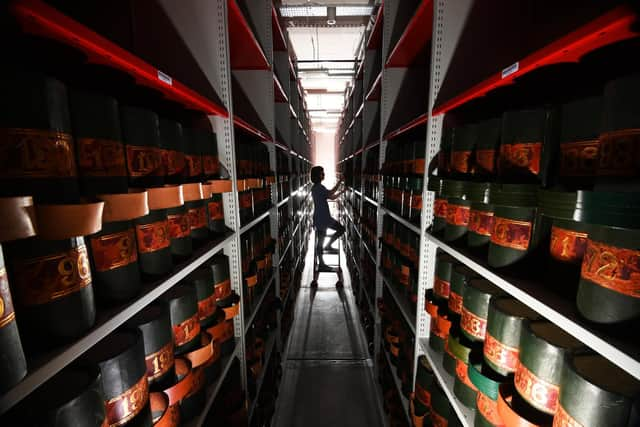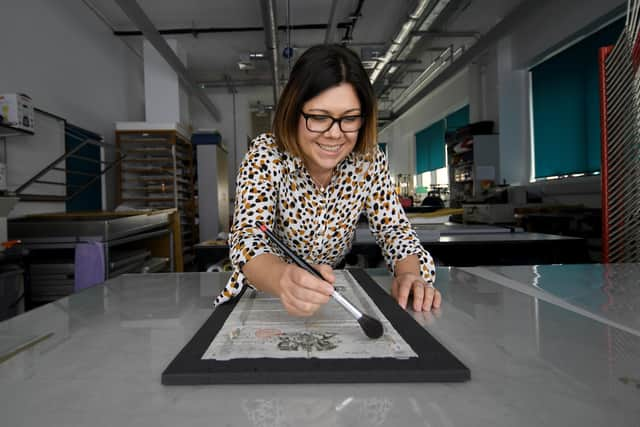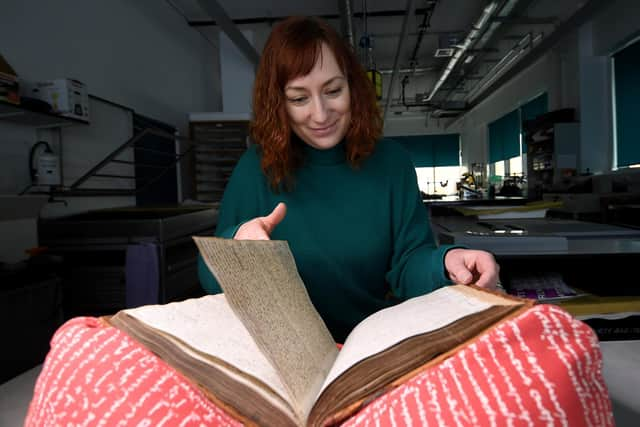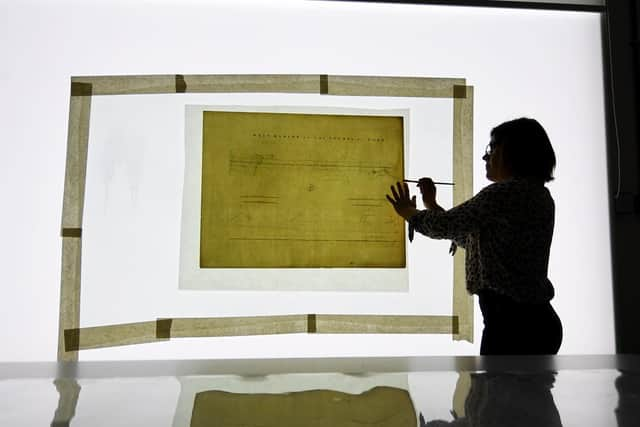Anne Lister's diaries go on public display in new exhibition
It is a lens to more than 800 years of history, capturing the unique documentary heritage of the West Yorkshire region. Across five offices, the West Yorkshire Archive Service (WYAS) collects and preserves millions of documents. “They give a record of what has happened and that’s so important going forward,” says Calderdale archivist,Ruth Cummins when we meet at the service headquarters at Wakefield’s West Yorkshire History Centre.
“People will use archives for all number of things. It might be to discover their personal family history, which could have a big impact on their lives. Archives also get used regularly for democratic processes. When there have been large-scale public inquiries, people have gone to archives, done research and people have got justice.
Advertisement
Hide AdAdvertisement
Hide Ad“It’s very important to have them both on a big scale to ensure democracy and the transparency of institutions but also on an individual level, so that people can look back on their own personal histories and connect with them.”


The archive is home to one of only five surviving Registry of Deeds collections in the whole country, containing copies of more than seven million land and property deeds from the years 1704 to 1970.
Among other treasures are records for Yorkshire’s major industries including mining and textiles, documents from courts, local authorities and hospitals, and family and estate records for the likes of Harewood House and Nostell Priory.
One of its most famous collections is the diaries of Anne Lister, a landowner, avid traveller and businesswoman, who once called Halifax’s Shibden Hall her home. Lister, who is regarded as “the first modern lesbian”, wrote an estimated five million words, a sixth of which were in crypthand, a code of her own devising that she used to describe her deepest emotions and private affairs. The diaries inspired the TV series Gentleman Jack, which focuses on Lister in the 1830s, and the volumes will feature in a WYAS exhibition – Anne Lister: In Her Words – launching next month.
Advertisement
Hide AdAdvertisement
Hide AdWYAS audience engagement and learning co-ordinator explains more. “It’s the first time so many of her diaries will have been together on display in one exhibition, which is really exciting.


“It’s really nice for people to be able to make the connection between the archival collection, which is quite often a bit behind the scenes, and the places like Shibden Hall where Anne lived. The connection that people have had with Anne Lister and what she has written in her diaries has just been incredible. People have been really moved, particularly the LGBT community.”
“Representation of marginal voices is a big thing,” Ruth interjects.
A rotating selection of the diary volumes will be on display in the exhibition as well as letters written by Lister and items from the Shibden archive collection.
Advertisement
Hide AdAdvertisement
Hide AdThe exhibition was originally going to be held in 2020, but plans were put on hold because of the pandemic. It has been a long time coming, says audience engagement archive assistant Dominique Triggs. “It’s going to be a really lovely opportunity to actually meet people face to face and for people to see the diaries in person.”


“We have gone through and thought about what are the things that were important to Anne, how did Anne choose to document her life and how can we show this in the exhibition,” Ruth adds. “It’s very much telling people about the diaries and about Anne as a person but then also letting her speak for herself. We’re using a lot of her own words rather than our words about Anne.”
The exhibition opens on Friday, to coincide with a festival of events being held to mark Lister’s birthday, and will run for a year, covering the period when Gentleman Jack returns for a second series this spring.
“Gentleman Jack really brought Anne Lister to everyone’s attention,” Anna says. “We didn’t know what had hit us. It’s a rare thing for an archive service to have quite so much limelight.”
Advertisement
Hide AdAdvertisement
Hide AdIndeed, much of the work that goes on at the service is somewhat “behind the scenes”. That includes the taking in of new material to add to the collections. Whilst people and organisations are able to donate records to the archives, in some cases, such as when a business abruptly folds, the team steps in to do a “rescue job” to obtain and preserve documents for the future. The contents of anything new to the archives need to be noted and catalogued and the material is often cleaned and “quarantined” to ensure environmental hazards such as pests or mould are not introduced into the service’s five offices in Bradford, Huddersfield, Wakefield, Halifax and Leeds.


Storage is important for preservation too; everything is kept in acid-free packaging and held in temperature-controlled strongrooms, as archive conservator Katie Proctor explains. “We make bespoke packaging for all our items, we monitor the environments they’re stored in – make sure the temperature and humidity is okay in all the strongrooms and monitor for pests and insects.”
Katie is part of the service’s conservation team, which has a dedicated conservation studio in the Wakefield headquarters. On the day of my visit, she is repairing a tear on Anne Lister’s passport ahead of the exhibition. A volume from the Registry of Deeds is also awaiting some conservation work. It’s a constant cycle, I’m told, with deed volumes always well-used by visitors. “If people have lost old deeds or are trying to trace their house history, then this really is an amazing collection,” Dominique says.
A big part of the work is ensuring that the vast records are meticulously catalogued and organised. Collections are obtained through a retrievals process which Anna likens to a trip to Argos. “With a museum, you can walk in and there’s quite a lot of collection items on display and you can immediately look at objects and artworks,” she says. “It’s different in an archive service as a lot of our material is stored in the strongrooms… I think that can make archives sometimes a bit difficult to get to grips with.
Advertisement
Hide AdAdvertisement
Hide Ad“I always say we’re a bit like Argos. People can come in and look at either a physical catalogue or online catalogue and search our collections using keywords. Then staff will help to hone that search down and find out what material we have that people can look at – at that point you’re kind of doing the order process. Then our staff retrieve those documents from the strongrooms and bring them down to a search room, where people can consult that original material.”
The archival collections at the WYAS are an unparalleled record of the history of the West Riding and its communities, covering the 12th century right through to the present day. Many items have national significance, including the records of the Stanley Royd mental health hospital and the National Coal Board collection of more than 2,000 boxes of material relating to Yorkshire collieries and coal miners.
“Archives are completely unique,” Anna says. “If you think about a library, if one burnt down, heaven forbid, most of that book stock could be replaced, because it’s published. “Some of the records we hold here, by contrast, are the only ones in the whole word.” That, of course, makes the archives an irreplaceable resource.


Anne Lister: In Her Words opens on April 1 at the West Yorkshire History Centre in Wakefield. Opening times are Mondays, Tuesdays, Thursdays and Fridays, 10am until 4pm.
Lister in fashion: Pages 24-26.
Comment Guidelines
National World encourages reader discussion on our stories. User feedback, insights and back-and-forth exchanges add a rich layer of context to reporting. Please review our Community Guidelines before commenting.